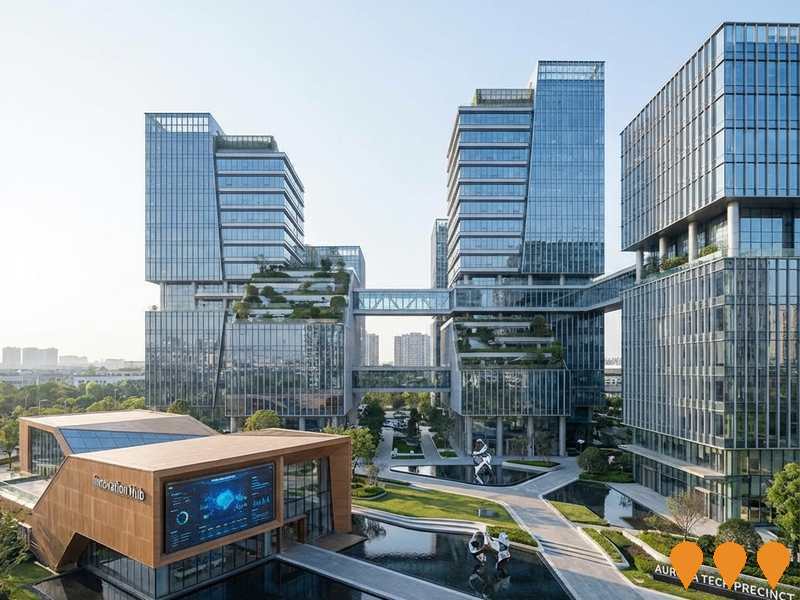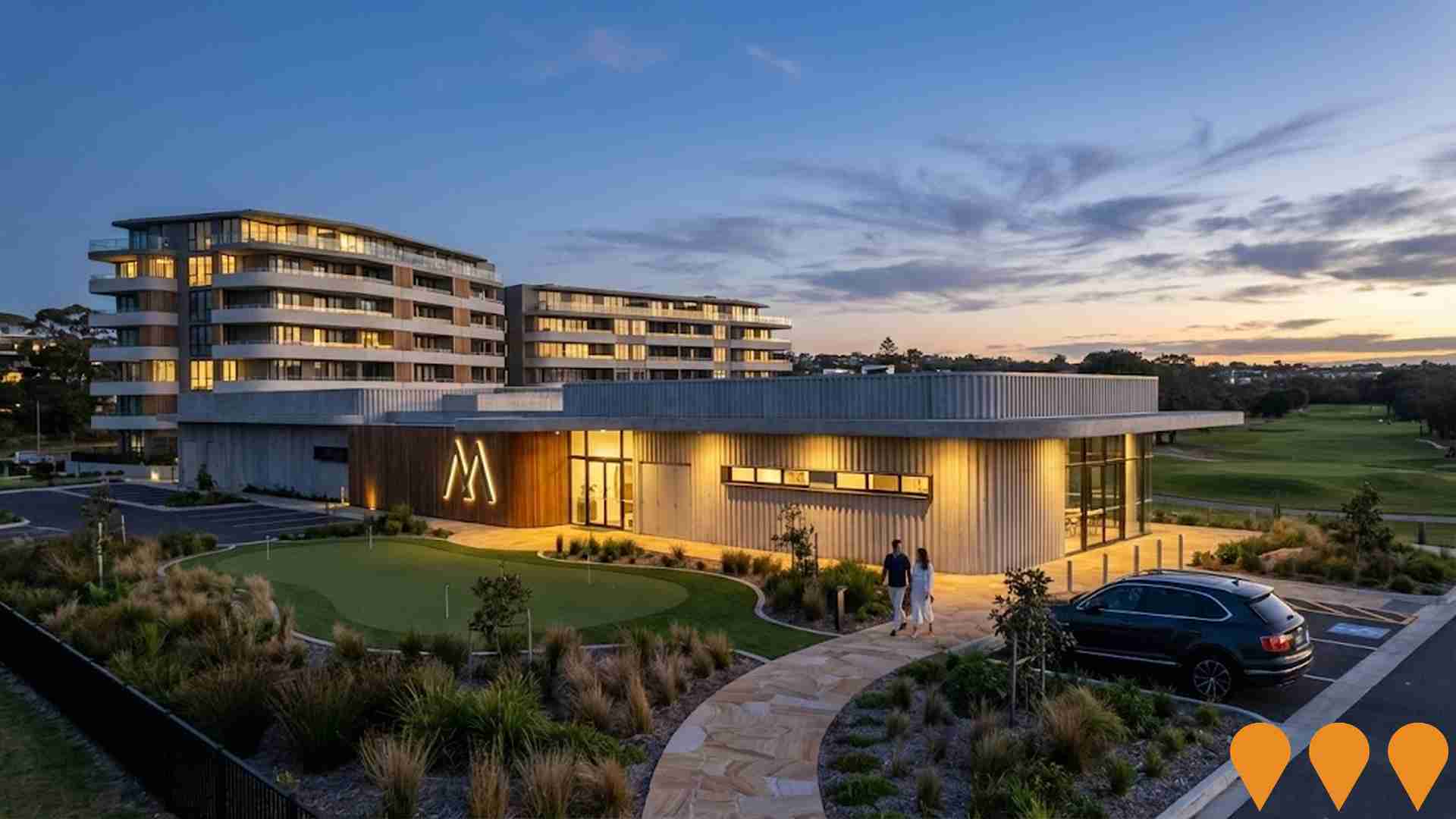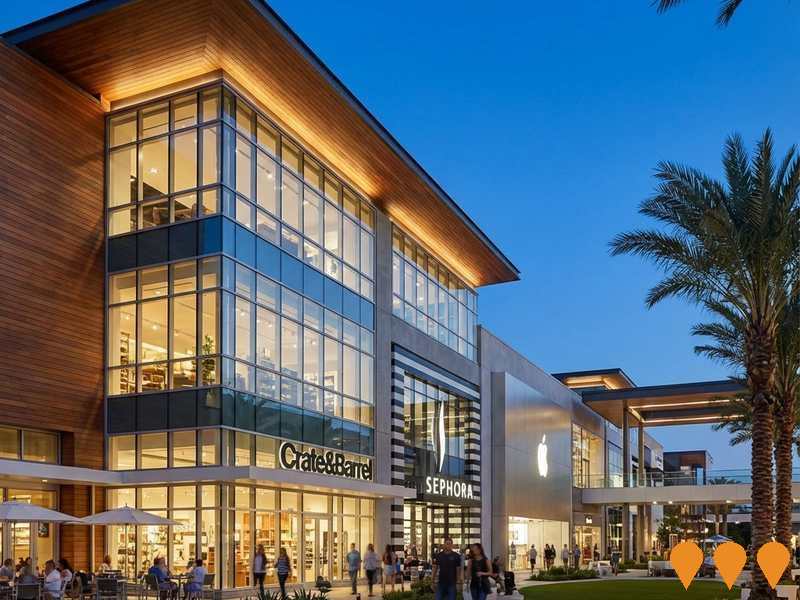Chart Color Schemes
est. as @ -- *
ABS ERP | -- people | --
2021 Census | -- people
Sales Activity
Curious about local property values? Filter the chart to assess the volume and appreciation (including resales) trends and regional comparisons, or scroll to the map below view this information at an individual property level.
Find a Recent Sale
Sales Detail
Population
An assessment of population growth drivers in Lambton - New Lambton reveals an overall ranking slightly below national averages considering recent, and medium term trends
Lambton - New Lambton's population is approximately 17,728 as of November 2025. From the 2021 Census, this represents a growth of 385 people and 2.2%. The estimated resident population in June 2024 was 17,693, with an additional 91 validated new addresses since the Census date contributing to this increase. This results in a population density ratio of 1,680 persons per square kilometer. Lambton - New Lambton's growth rate is competitive, being within 2.9 percentage points of the non-metro area (5.1%). Overseas migration accounted for approximately 71.4% of overall population gains recently.
AreaSearch uses ABS/Geoscience Australia projections released in 2024 with a base year of 2022 for covered SA2 areas, and NSW State Government's SA2 level projections released in 2022 with a base year of 2021 for uncovered areas. Growth rates by age group are applied to all areas from 2032 to 2041. Future population growth is anticipated to be lower quartile for Australia's regional areas, with an expected increase of 390 persons to 2041 based on the latest numbers, translating to a total increase of 2.0% over 17 years.
Frequently Asked Questions - Population
Development
Residential development activity is slightly higher than average within Lambton - New Lambton when compared nationally
Lambton - New Lambton has seen approximately 56 dwellings granted development approval annually. In the past five financial years, from FY-21 to FY-25282 homes were approved, with an additional 32 approved in FY-26 so far. On average, 1.9 new residents have arrived per newly constructed home each year over these five years.
This suggests a balanced supply and demand dynamic in the housing market, with an average construction value of $393,000 per dwelling. In the current financial year, $7.2 million worth of commercial approvals have been registered. Compared to the rest of NSW, Lambton - New Lambton exhibits around 59% of the construction activity per capita and ranks in the 50th percentile nationally, indicating its established character and potential planning constraints. Recent construction comprises 57.0% standalone homes and 43.0% townhouses or apartments, reflecting a shift towards medium-density housing options. This contrasts with the existing housing stock, which is predominantly houses (79.0%).
The area has approximately 325 people per dwelling approval, suggesting a low-density market. By 2041, population forecasts project an increase of 355 residents in Lambton - New Lambton. Given current construction levels, housing supply should meet demand adequately, creating favourable conditions for buyers and potentially enabling growth that exceeds current projections.
Frequently Asked Questions - Development
Infrastructure
Lambton - New Lambton has strong levels of nearby infrastructure activity, ranking in the top 30% nationally
The performance of an area is significantly influenced by changes to local infrastructure, major projects, and planning initiatives. AreaSearch has identified a total of 25 projects that are expected to impact the area. Notable projects include the John Hunter Health and Innovation Precinct, Newcastle Inner City Bypass - Rankin Park to Jesmond, Lambton Park Master Plan, and Wests Group Townhouse Development. The following list details those projects likely to be most relevant.
Professional plan users can use the search below to filter and access additional projects.
INFRASTRUCTURE SEARCH
 Denotes AI-based impression for illustrative purposes only, not to be taken as definitive under any circumstances. Please follow links and conduct other investigations from the project's source for actual imagery. Developers and project owners wishing us to use original imagery please Contact Us and we will do so.
Denotes AI-based impression for illustrative purposes only, not to be taken as definitive under any circumstances. Please follow links and conduct other investigations from the project's source for actual imagery. Developers and project owners wishing us to use original imagery please Contact Us and we will do so.
Frequently Asked Questions - Infrastructure
John Hunter Health and Innovation Precinct
The John Hunter Health and Innovation Precinct is the redevelopment and expansion of John Hunter Hospital in New Lambton Heights, Newcastle. The project centres on a new seven-storey Acute Services Building delivering an expanded Emergency Department, 60% more ICU capacity, 50% additional operating theatres, new maternity and birthing suites, neonatal intensive care, paediatric services, research and innovation spaces, public realm improvements and a multi-storey car park. The $835 million project is being delivered by Health Infrastructure NSW in partnership with Hunter New England Local Health District, with Multiplex as the managing contractor and BVN as lead architect. Practical completion is anticipated in 2026.
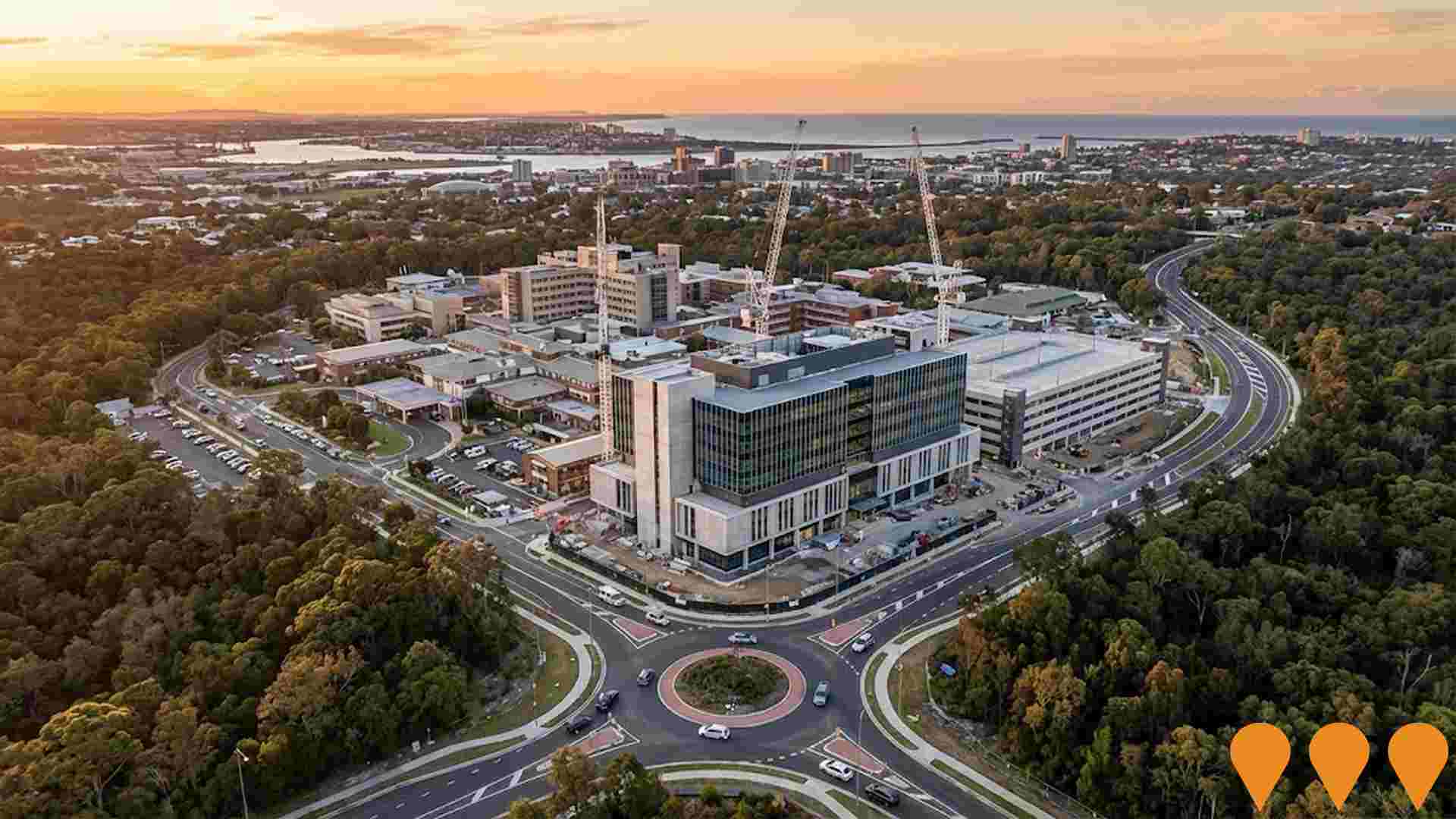
Hunter Indoor Sports Centre
A new 12-court indoor sports facility with a 2,500-seat show court, multi-purpose courts for basketball, netball, volleyball, futsal, pickleball, badminton and wheelchair sports, plus gym, health suites, cafe and extensive car parking. The centre will replace the ageing Newcastle Basketball Stadium and address the critical shortage of indoor sports venues in the Hunter region.
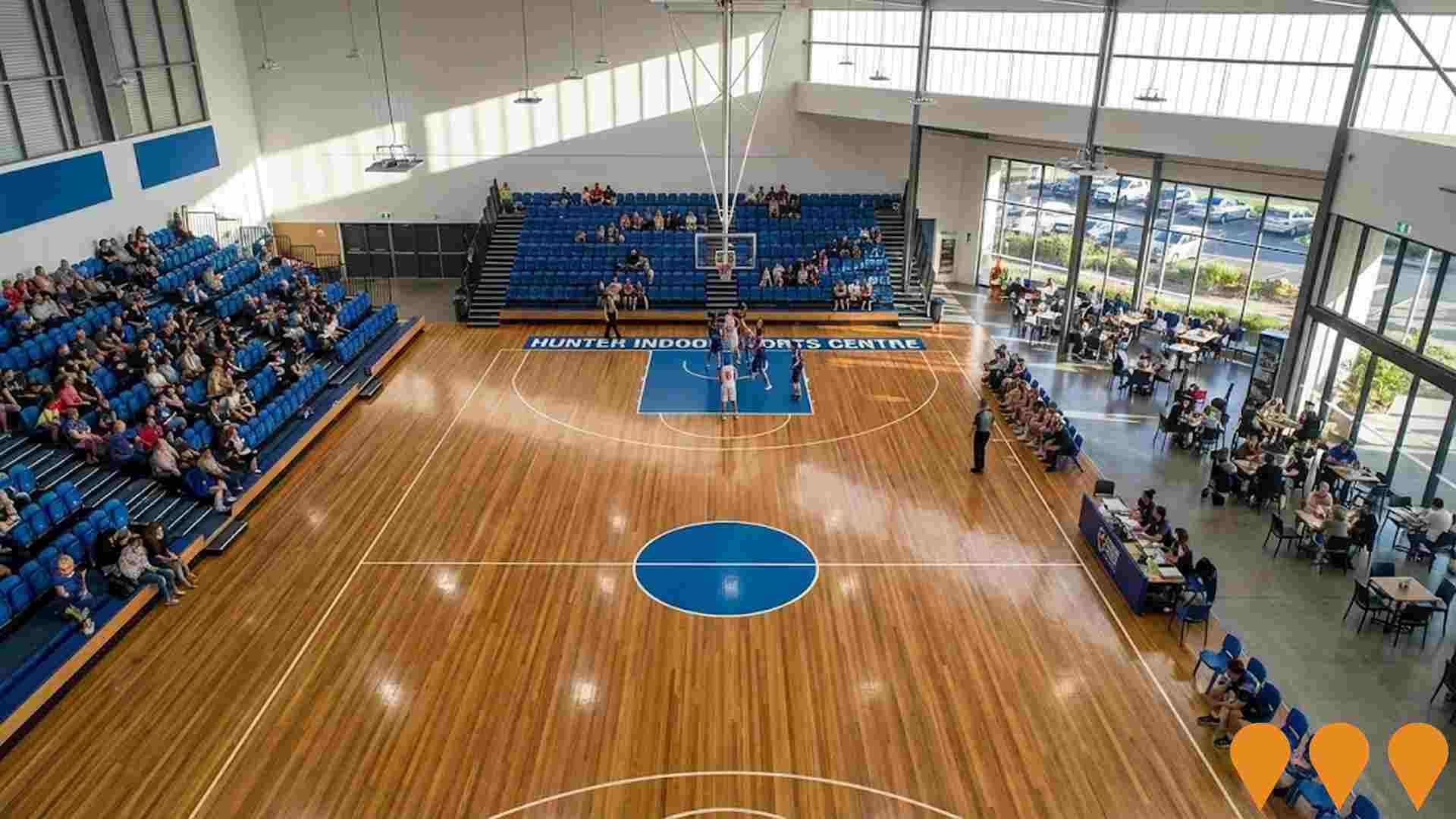
Westfield Kotara Mixed-Use Redevelopment
Scentre Group is exploring rezoning opportunities with the NSW Government to potentially develop a mixed-use precinct at the Westfield Kotara site. This is part of Scentre Group's long-term $4+ billion pipeline focused on integrating living, working, and shopping spaces on their strategic land holdings. The vision for Kotara may include a large-scale residential component, adding housing supply near the existing retail hub, reflecting a shift towards creating 'town centres of the future.' As of early 2025, Scentre Group had commenced preliminary talks about rezoning at the Kotara centre, with the overall goal of securing rezoning approvals for residential development on a number of its sites.
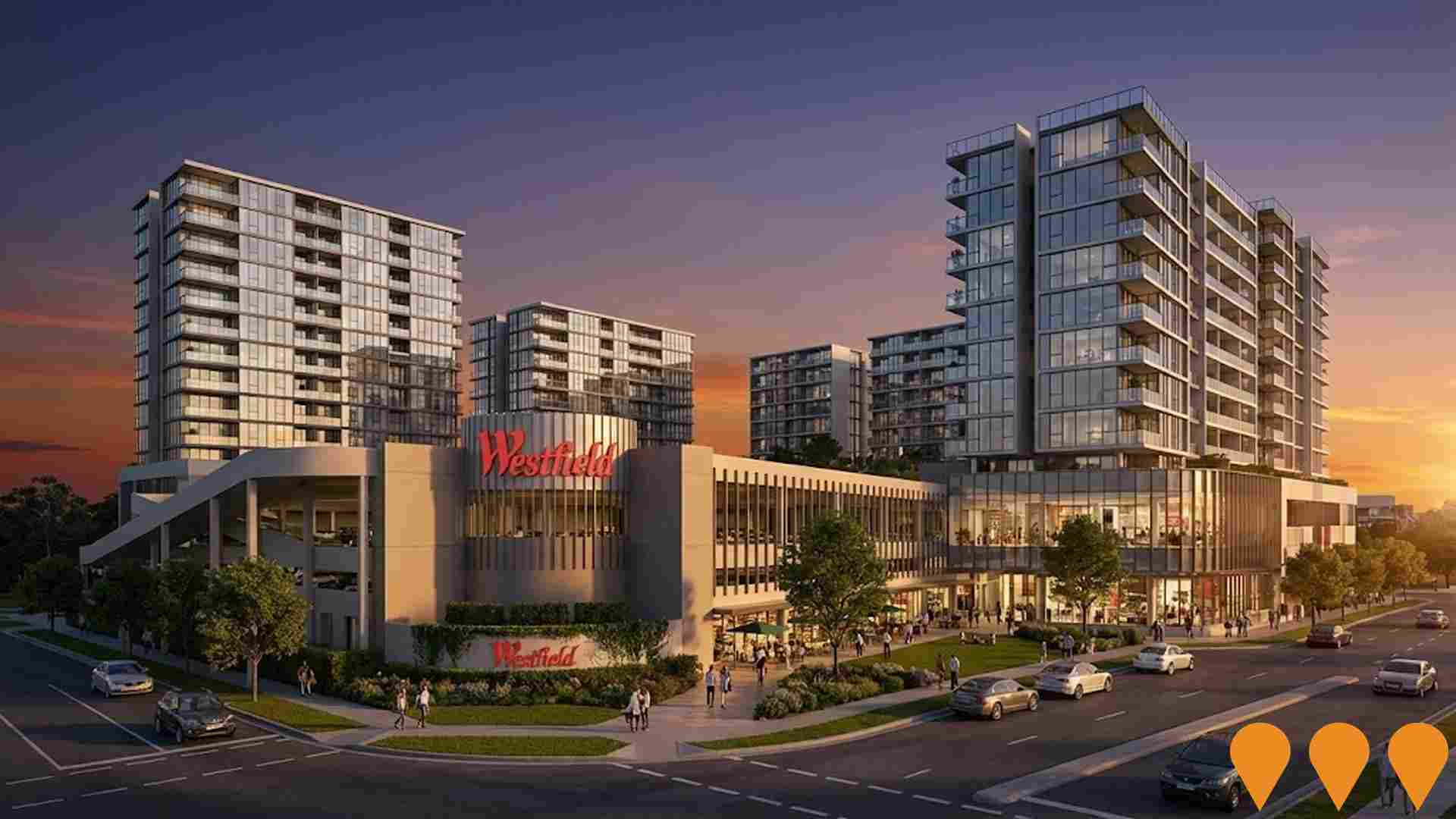
Kotara Transport Oriented Development Precinct
The Kotara Transport Oriented Development (TOD) Precinct is part of the NSW Government's TOD Program. New planning controls, which commenced on **13 May 2024**, apply to land generally within **400m of Kotara station** to encourage higher-density residential and mixed-use development. This involves allowing residential flat buildings and shop-top housing with a maximum building height of **22m** (approx. 7 storeys) and a maximum Floor Space Ratio (FSR) of **2.5:1** within certain zones. These changes aim to deliver more affordable and well-located homes near public transport. The controls were implemented through the State Environmental Planning Policy (Housing) - Chapter 5 Transport Oriented Development.
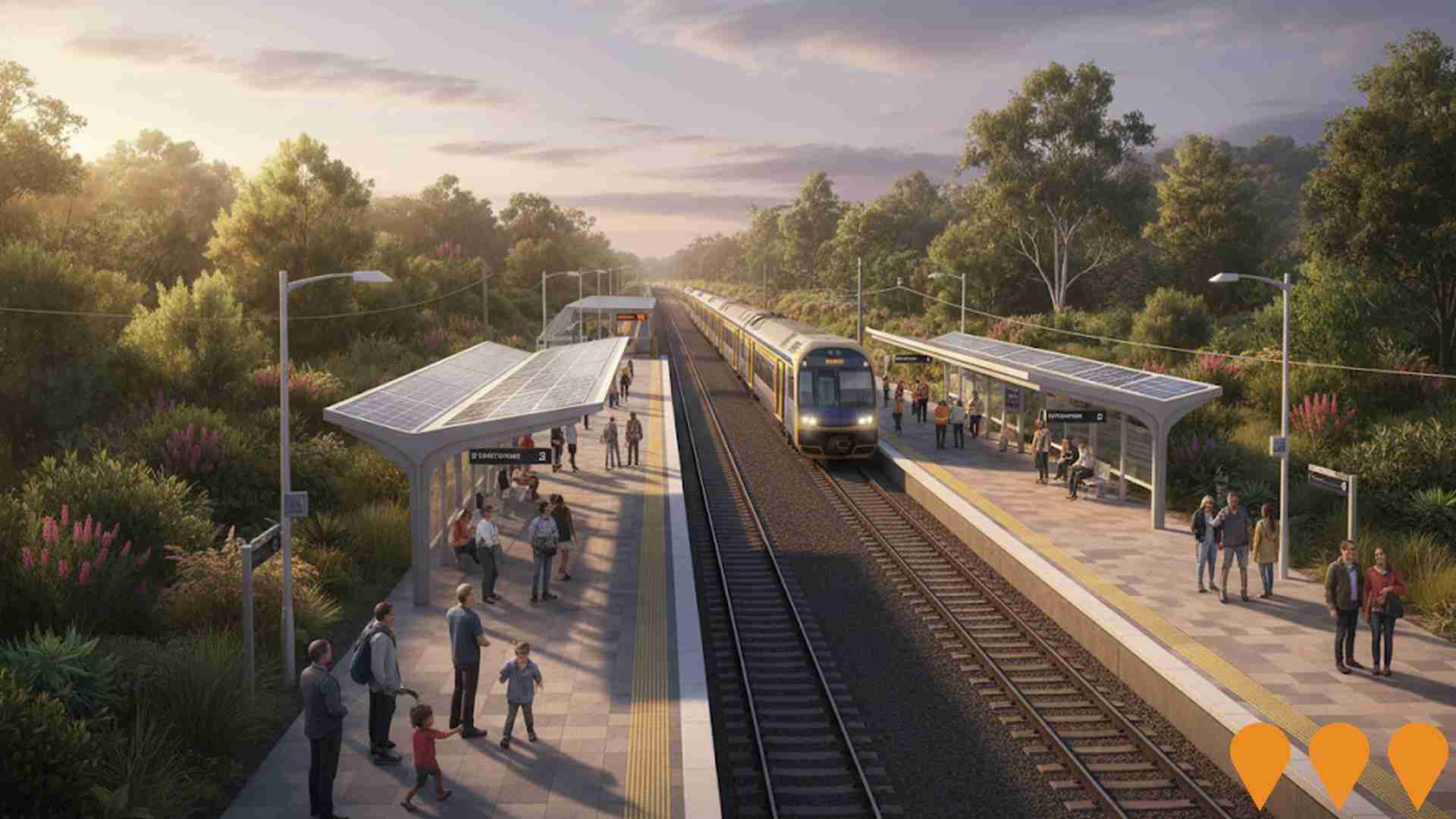
Lambton Park Master Plan
A comprehensive master plan approved by Newcastle Council in May 2025 to guide the future development of Lambton Park. The plan focuses on enhancing facilities, community engagement, heritage preservation, and recreational opportunities while maintaining the park as an open green space. Key developments include Lambton Pool upgrades, heritage rotunda preservation, improved accessibility, tennis courts, bowling club facilities, children's playgrounds, walking tracks, and the transformation of the former Baby Health Centre into a modern cafe.

Adamstown Renewal Corridor
The Adamstown Renewal Corridor is a strategic urban renewal initiative under the Newcastle Development Control Plan 2012, promoting housing intensification, mixed-use developments, economic renewal, and redevelopments of specific sites such as the former Adamstown Public School and Council Library to enhance density, streetscapes, and public spaces.
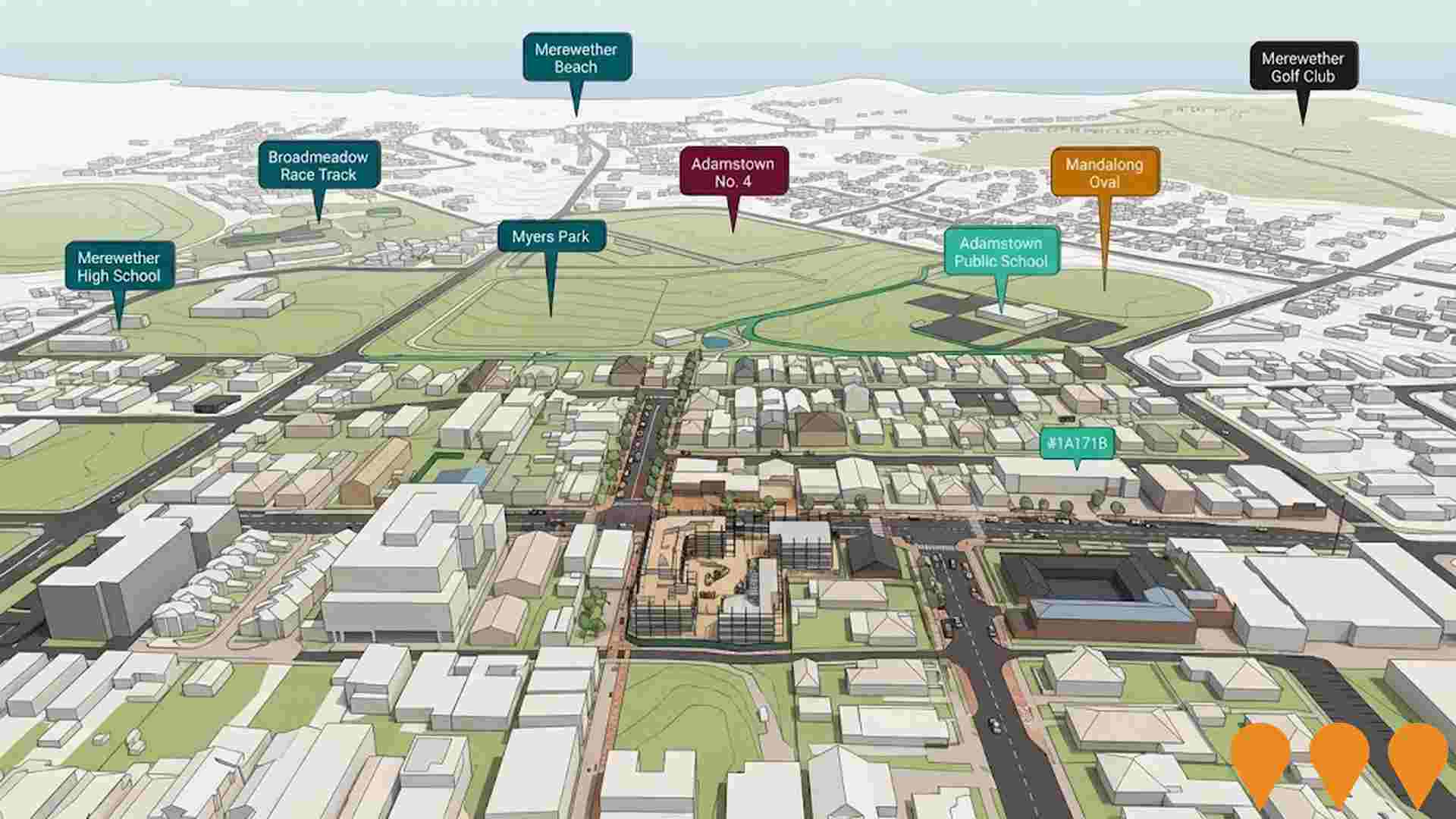
Newcastle Inner City Bypass - Rankin Park to Jesmond
The 3.4 km Rankin Park to Jesmond section is the fifth and final stage of the Newcastle Inner City Bypass. It delivers a new four lane divided road with three interchanges (southern at Lookout Road, hospital, and northern at Newcastle Road), removes up to 30,000 vehicles per day from local roads, and provides off road links for pedestrians and cyclists including a new steel arch bridge at the northern interchange. Traffic switches at Jesmond (Dec 2024) and Lookout Rd/McCaffrey Dr (mid 2025) mark major milestones. Opening to traffic is targeted for late 2025, weather permitting.

Former Waratah Gasworks Redevelopment
A $25 million NSW Government project to remediate contaminated land and rebuild homes at the former Waratah Gasworks site, which operated from 1889 to 1926. The project involves remediating 13 residential properties, with excavation and removal of over 20,000 tonnes of contaminated material including a 56-metre underground gasholder, tar wells, and purifier beds containing cyanide, lead, and other toxic substances. Seven properties are being rebuilt by the government, four will be sold as remediated vacant land, and two remain to be remediated. Construction of new homes commenced in July 2025.
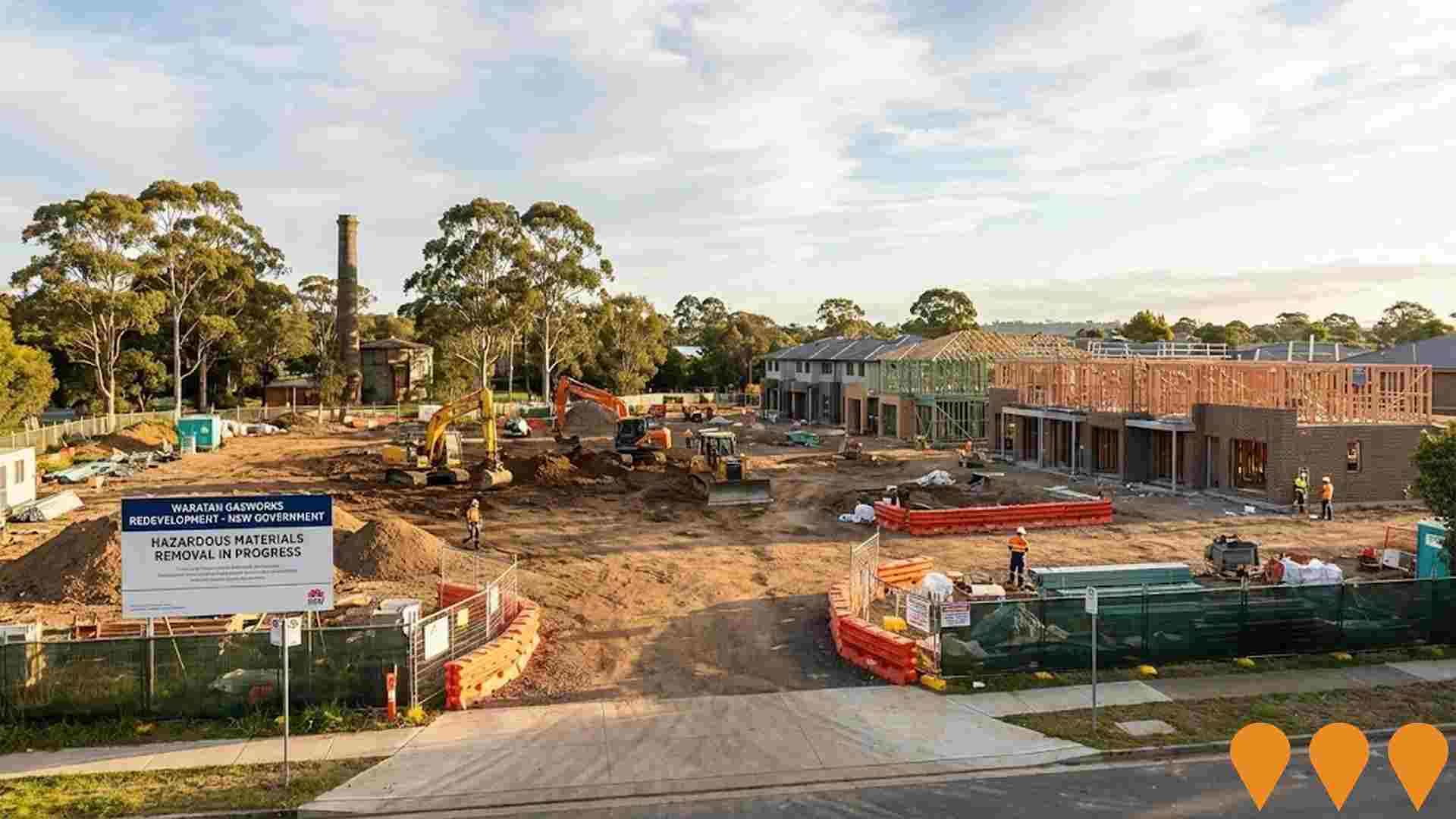
Employment
Lambton - New Lambton ranks among the top 25% of areas assessed nationally for overall employment performance
Lambton - New Lambton has a highly educated workforce with prominent representation in essential services sectors. The unemployment rate as of June 2025 was 2.2%, lower than the Rest of NSW's rate of 3.7%.
Employment growth over the past year was estimated at 2.3%. As of June 2025, 10,120 residents were employed with a workforce participation rate of 65.3%, higher than the Rest of NSW's rate of 56.4%. Dominant employment sectors among residents include health care & social assistance, education & training, and retail trade. The area specializes particularly in health care & social assistance, with an employment share 1.3 times the regional level.
Conversely, agriculture, forestry & fishing has limited presence at 0.3% compared to the regional average of 5.3%. The ratio of 0.7 workers per resident indicates a higher-than-average level of local employment opportunities. Between June 2024 and June 2025, employment levels increased by 2.3%, while the labour force grew by 2.5%, causing the unemployment rate to rise by 0.3 percentage points. In comparison, Rest of NSW saw an employment decline of 0.1% with a labour force growth of 0.3% and an unemployment increase of 0.4 percentage points. Jobs and Skills Australia's national employment forecasts from May 2025 project national employment growth of 6.6% over five years and 13.7% over ten years, with varying rates across industry sectors. Applying these projections to Lambton - New Lambton's employment mix suggests local growth of approximately 7.2% over five years and 14.8% over ten years, though these are simple extrapolations for illustrative purposes and do not account for localized population projections.
Frequently Asked Questions - Employment
Income
Income analysis reveals strong economic positioning, with the area outperforming 60% of locations assessed nationally by AreaSearch
Lambton - New Lambton has a high national income level according to AreaSearch data from the Australian Taxation Office (ATO) for financial year 2022. The median income among taxpayers in Lambton - New Lambton is $56,681 and the average income stands at $75,394. This compares to figures for Rest of NSW which are $49,459 and $62,998 respectively. Based on Wage Price Index growth of 12.61% since financial year 2022, estimated incomes as of September 2025 would be approximately $63,828 (median) and $84,901 (average). Census data shows that household, family and personal incomes in Lambton - New Lambton are at the 62nd percentile nationally. Income brackets indicate that 28.3% of the community earn between $1,500 and $2,999 (5,017 individuals), which is consistent with broader trends across the metropolitan region showing 29.9% in the same category. High housing costs consume 15.5% of income, but strong earnings still place disposable income at the 58th percentile nationally. The area's SEIFA income ranking places it in the 6th decile.
Frequently Asked Questions - Income
Housing
Lambton - New Lambton is characterized by a predominantly suburban housing profile, with above-average rates of outright home ownership
In Lambton - New Lambton, as of the latest Census, 78.9% of dwellings were houses, with the remaining 21.2% comprising semi-detached homes, apartments, and other types. This compares to Non-Metro NSW's 70.5% houses and 29.5% other dwellings. Home ownership in Lambton - New Lambton stood at 34.9%, with mortgaged properties at 34.1% and rented ones at 31.1%. The median monthly mortgage repayment was $2,119, higher than Non-Metro NSW's average of $1,962. The median weekly rent in Lambton - New Lambton was $390, compared to Non-Metro NSW's $400. Nationally, Lambton - New Lambton's mortgage repayments were significantly higher at $2,119 versus the Australian average of $1,863, and rents exceeded the national figure of $375 by $15.
Frequently Asked Questions - Housing
Household Composition
Lambton - New Lambton features high concentrations of group households, with a fairly typical median household size
Family households compose 67.2% of all households, including 30.6% couples with children, 23.0% couples without children, and 12.5% single parent families. Non-family households constitute the remaining 32.8%, with lone person households at 28.6% and group households comprising 4.2%. The median household size is 2.4 people, aligning with the Rest of NSW average.
Frequently Asked Questions - Households
Local Schools & Education
Lambton - New Lambton shows strong educational performance, ranking in the upper quartile nationally when assessed across multiple qualification and achievement indicators
In Lambton - New Lambton, 34.8% of residents aged 15 and above have university qualifications, surpassing the broader benchmarks of 21.3% in Rest of NSW and 26.1% in the SA4 region. Bachelor degrees are the most prevalent at 23.3%, followed by postgraduate qualifications (8.1%) and graduate diplomas (3.4%). Vocational credentials are also prominent, with 32.6% of residents aged 15 and above holding them - advanced diplomas account for 10.6% and certificates for 22.0%. Educational participation is high, with 31.0% of residents currently enrolled in formal education.
This includes 10.1% in primary education, 8.6% in secondary education, and 6.5% pursuing tertiary education. There are seven schools operating within Lambton - New Lambton, educating approximately 3,288 students. The area has above-average socio-educational conditions, with an ICSEA score of 1080. The educational mix includes five primary schools, one secondary school, and one K-12 school. Note: for schools showing 'n/a' in enrolments, please refer to the parent campus.
Frequently Asked Questions - Education
Schools Detail
Nearby Services & Amenities
Transport
Transport servicing is high compared to other areas nationally based on assessment of service frequency, route connectivity and accessibility
Transport analysis indicates 162 active transport stops operating within Lambton - New Lambton, consisting of a mix of train and bus services. These stops are serviced by 82 individual routes, collectively providing 3,916 weekly passenger trips. Transport accessibility is rated as excellent, with residents typically located 139 meters from the nearest transport stop.
Service frequency averages 559 trips per day across all routes, equating to approximately 24 weekly trips per individual stop.
Frequently Asked Questions - Transport
Transport Stops Detail
Health
Health performance in Lambton - New Lambton is lower than average with common health conditions somewhat prevalent across both younger and older age cohorts
Lambton-New Lambton faces significant health challenges, with common health conditions prevalent across both younger and older age cohorts.
The rate of private health cover is very high at approximately 57% of the total population (around 10,122 people). Mental health issues and arthritis are the most common medical conditions in the area, impacting 10.5 and 8.7% of residents respectively. About 65.7% of residents declare themselves completely clear of medical ailments compared to 64.9% across the rest of NSW. The area has 17.6% of residents aged 65 and over (around 3,123 people). Health outcomes among seniors present some challenges, broadly in line with the general population's health profile.
Frequently Asked Questions - Health
Cultural Diversity
Lambton - New Lambton ranks below the Australian average when compared to other local markets across a number of language and cultural background related metrics
Lambton-New Lambton, surveyed in 2016, had low cultural diversity with 87.0% Australian-born population, 91.9% citizens, and 91.3% speaking English only at home. Christianity was the predominant religion (51.4%), slightly higher than Rest of NSW's 47.7%. Top ancestral groups were English (30.2%), Australian (28.1%), and Irish (9.8%).
Notable differences included Macedonian (1.2% vs regional 0.8%), Welsh (0.8% vs 0.8%), and Polish (0.9% vs 0.8%) groups.
Frequently Asked Questions - Diversity
Age
Lambton - New Lambton's population is slightly older than the national pattern
The median age in Lambton - New Lambton is 40 years, which is slightly below Rest of NSW's average of 43 but above Australia's median of 38. The 15-24 age cohort makes up 13.8% of the local population, higher than the Rest of NSW average, while the 65-74 age group constitutes 9.6%, lower than the Rest of NSW average. Between the 2021 Census and now, the 25 to 34 age group has increased from 11.3% to 12.6% of the population, and the 15 to 24 cohort has risen from 12.7% to 13.8%. Conversely, the 5 to 14 age group has decreased from 13.4% to 12.1%, and the 45 to 54 age group has dropped from 14.5% to 13.3%. By 2041, population forecasts indicate significant demographic changes in Lambton - New Lambton. The 25 to 34 age cohort is projected to grow by 505 people (23%), from 2,240 to 2,746. Meanwhile, the 5 to 14 and 45 to 54 age cohorts are expected to experience population declines.


